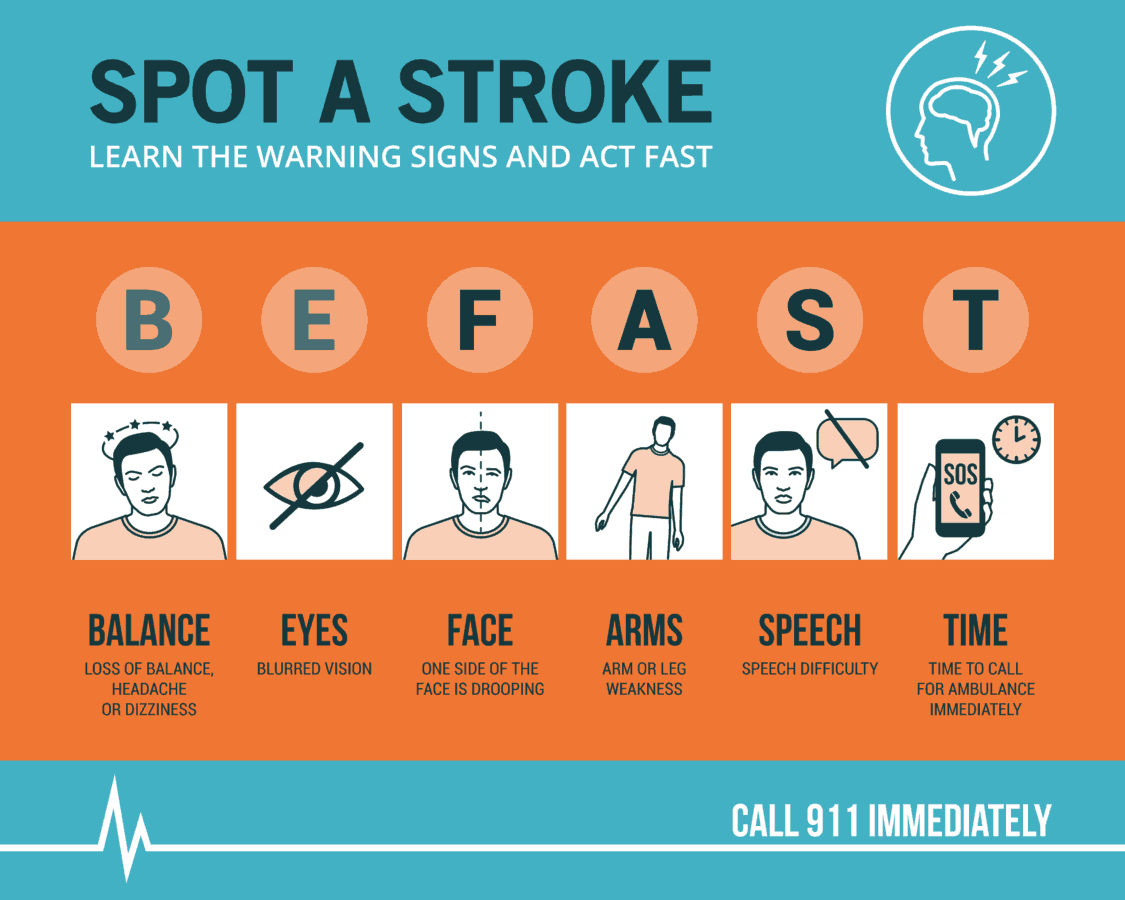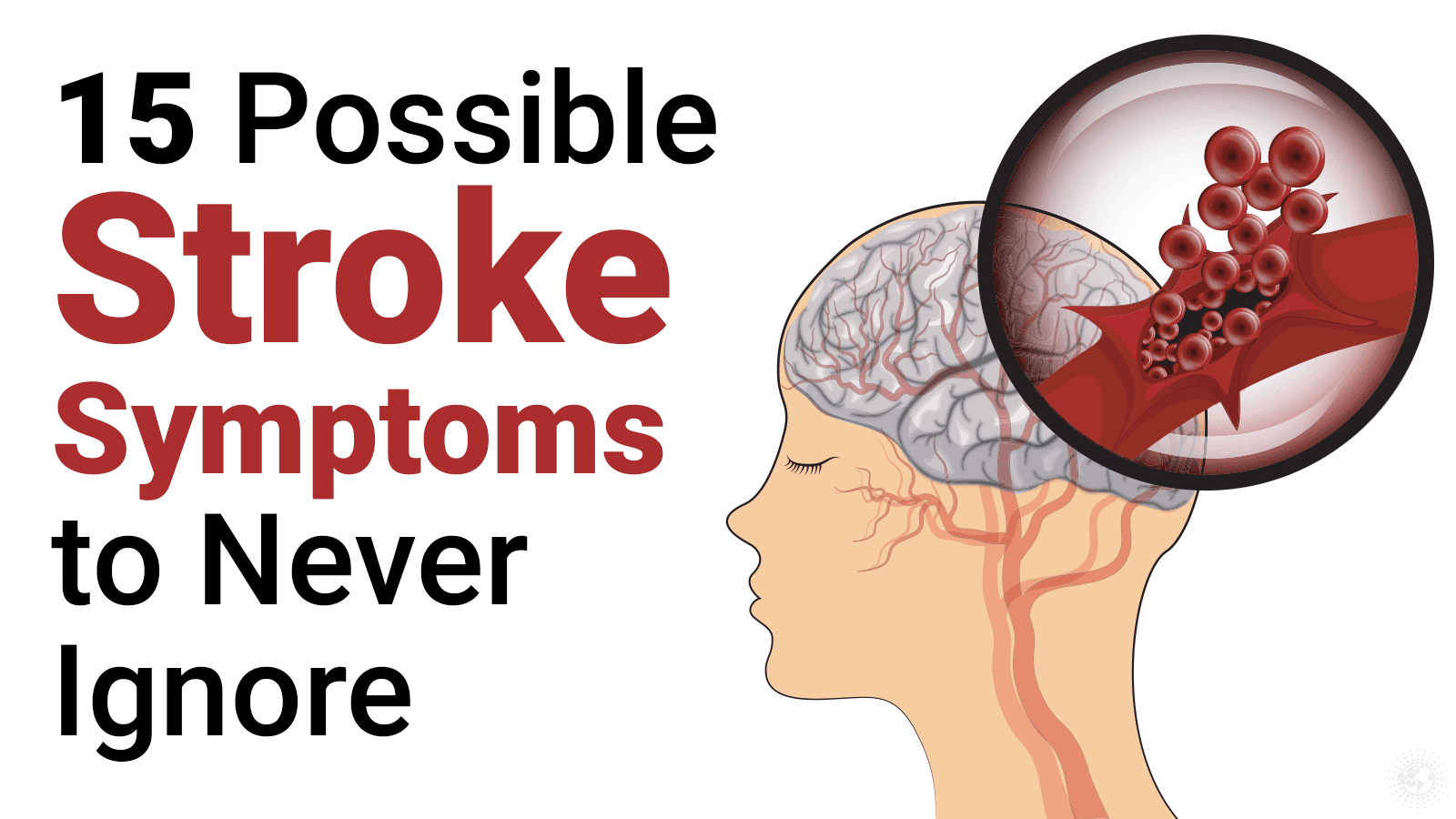Per Science Daily, around 80 percent of all strokes are preventable. As is the case with every other preventable medical condition, awareness is the key. It is also critical to understand that women often have different stroke symptoms than men, a fact which may help explain why a disproportionate number of female stroke cases are fatal.
The brain is an extremely complex organ that controls various body functions. If a stroke occurs and blood flow can’t reach the region that controls a particular body function, that part of the body won’t work as it should. ~ The American Stroke Association
Stroke is the third most common cause of death among women – fifth in the overall population – and a leading cause of disability in the United States. A stroke occurs when a blood vessel carrying oxygen and nutrients to the brain either bursts or is obstructed from a blood clot. When this happens, parts of the brain cannot receive the necessary oxygen – and cells begin to die.
There are three types of stroke: ischemic stroke, hemorrhagic stroke, or a transient ischemic attack (TIA). Ischemic stroke is caused by a blood clot; hemorrhagic stroke occurs as the result of blood vessel rupture, and TIA happens where there’s a temporary clot blocking the normal flow of blood to one or more brain regions. TIA is often referred to as a “mini-stroke” – but is nonetheless very dangerous as it can progress into a full-blown case.
Here are 15 possible stroke symptoms never to ignore:
1. Autoimmune Disease
Researchers from Spain found that women are more likely to suffer from an autoimmune disease that raises the risk of cardiovascular disease and stroke. Inflammation of the brain’s blood vessels may be the reason, according to the study.
2. Mental Health Problems
The link between mental health problems and stroke isn’t yet clear. However, researchers from Harvard University have found a correlation between heightened amygdala activity and a higher risk of stroke.
3. Irregular Heartbeat
The heart, of course, is responsible for delivering oxygen-rich blood to every organ of the body. Irregular heartbeat, also known as heart palpitations, correlate with a higher risk of stroke. The Stroke Foundation of Australia specifies atrial fibrillation – a related condition – as a risk factor for stroke.
4. Premature Menopause or Menstruation
As stated, women experience stroke disproportionate to their population numbers – and hormones are a big reason why this is. Research states that either menstruation before age 10 and menopause before age 45 may be tied to increasing stroke risk.
5. Hallucinations
Vision changes are a universal sign of stroke. Women are more prone to report these disturbances as hallucinations. Regardless, if you see something that your logical brain knows isn’t there, call 9-1-1.
6. Behavioral Changes
Per the University of Michigan, women are more likely to experience a shift in mental state – and less likely to report it. This is a problem, as some stroke types target areas of the brain responsible for personality. Talk to a doctor about changes in mood – it may save your life.
7. Fainting

The brain’s consciousness center lies atop the brainstem. As a result, cutting blood flow to this region of the brain can result in fainting. Furthermore, women are more likely to suffer strokes to this part of the brain than are men. So don’t downplay any loss of consciousness – talk to your doctor.
8. Use of Birth Control Pills or HRT
Hormone replacement therapy (HRT) and birth control pills raise the likelihood of stroke. According to the American Stroke Association, ‘the pill’ can double your chances of stroke. Make sure your doc is affirming healthy blood pressure levels before prescribing either treatment!
9. Slurred Speech
Okay, so both men and women report this one. Slurred speech is a telltale sign that something is amiss with your noggin (provided you’re sober!) Don’t mess around. Call 9-1-1.
10. Sudden Prolonged Numbness
The limbs send signals to the brain – and vice-versa – which creates the sensation of touch. If you all of a sudden are experiencing severe, unexpected, and lengthy numb sessions, something is almost certainly wrong.
11. Nausea or Vomiting
Brain blood vessels that are swollen can create pressure in the cerebellum and cause bouts of nausea or vomiting. Hemorrhage-type strokes are also known to produce both symptoms. If nausea or vomiting are accompanied by any other sign on this list, do yourself a favor and talk to your doc.
12. Difficulty Breathing
Any, we repeat any, problems with breathing are a medical emergency – period. There may be any number of reasons why you can’t breathe, and all of them require a trip to the ER.
13. History of Miscarriages
Back to women-only symptoms. “The clotting factors increase the risk of developing clots in the heart or in the blood vessels of the brain, both of which can lead to stroke,” says Wake Forest University Professor of neurology and neurosurgery, Dr. Cheryl Bushnell.
14. Hormonal Imbalances
Low DHEA levels may reflect some relatively-minor underlying problem, but this hormone affects others too. Low levels of DHEA, in particular, are tied to increased risk of stroke.
15. Aura Migraines
Migraines, especially with visual disturbances (auras), are a proven risk factor for stroke. These vicious headaches cause the constriction of blood vessels, which may affect the oxygen supply to the brain.
Preventing Stroke
Stroke is a possibly fatal medical emergency. Those that survive the ordeal often face months – if not years – of rehabilitation to recover loss of function.
The lesson? Prevention is always the best medicine, especially for a condition as serious as a stroke. With this in mind, here are seven preventative measures courtesy of Harvard Medical School:
– Get regular exercise
– Lose some weight
– Monitor your blood pressure
– Drink alcohol in moderation
– Treat atrial fibrillation (a form of irregular heartbeat)
– Watch your sugar intake
– Quit smoking
The National Stroke Association explains the ‘F-A-S-T’ technique for identifying a possible stroke:
– (F)ace: Does one side of the face droop?
– (A)rms: Lift both arms above your head. Does one arm involuntarily drift downwards?
– (S)peech: Is it challenging to speak? Are you slurring your words?
– (T)ime: Call emergency services right away if you or someone else notice one or more of these signs.
https://youtu.be/7BNGVmwxoHI

















